Product Overview
† commercial product
Genotropin Miniquick contains recombinant somatropin, a synthetic form of human growth hormone that is biologically identical to the naturally occurring growth hormone produced by the pituitary gland.[1] This medication represents a significant advancement in growth hormone replacement therapy, utilizing recombinant DNA technology to provide a consistent, pure, and effective treatment option for patients with growth hormone deficiency.[2] The active ingredient, recombinant somatropin, is produced using Escherichia coli bacteria through sophisticated biotechnology processes that ensure high purity and biological activity.[3]
Recombinant somatropin may play a crucial role in addressing various growth-related disorders and hormone deficiency conditions.[4] Healthcare providers may prescribe this medication for pediatric patients experiencing growth failure due to inadequate endogenous growth hormone production, as well as for specific conditions such as Turner syndrome, Prader-Willi syndrome, and children born small for gestational age who fail to demonstrate catch-up growth.[5] In adult populations, this therapy could potentially be utilized for growth hormone deficiency of either childhood or adult onset.[6]
The development of recombinant somatropin has revolutionized the treatment landscape for growth hormone deficiency, offering a safer alternative to previously used pituitary derived growth hormone.[7] This biotechnology-derived medication may provide patients with consistent therapeutic outcomes while minimizing the risks associated with earlier treatment approaches.[8] The Miniquick delivery system represents an innovative approach to growth hormone administration, potentially offering convenience and precision in dosing for patients requiring this specialized therapy.[9]
The dosage of recombinant somatropin should be individualized based on the patient’s specific condition, body weight, and clinical response.[61] For pediatric patients with growth hormone deficiency, the recommended initial dosage typically ranges from 0.16 to 0.24 mg/kg/week, divided into daily subcutaneous injections.[62] Some patients may require higher initial doses, particularly very short children with height standard deviation scores less than -3, where doses up to 0.48 mg/kg/week may be considered.[63]
Adult patients with growth hormone deficiency should typically start with lower doses to minimize the risk of adverse effects.[64] The recommended initial dosage for adults is generally not more than 0.04 mg/kg/week, which may be increased gradually based on individual patient requirements to not more than 0.08 mg/kg/week at 4- 8 week intervals.[65] Dose titration should be guided by clinical response, side effects, and serum IGF-1 concentrations.[66] Lower starting doses and smaller dose increments should be considered for older patients, who may be more prone to adverse effects.[67]
The weekly dose should be divided into 6 or 7 subcutaneous injections, and the medication must not be administered intravenously.[68] Injection sites should be rotated regularly to prevent lipoatrophy.[69] The Genotropin Miniquick device provides doses ranging from 0.2 mg to 2.0 mg per single-use device.[70] After reconstitution, each device delivers 0.25 mL regardless of strength.[71] Healthcare providers should provide comprehensive training on proper injection technique and device usage before patients begin self-administration.[72]
Recombinant somatropin functions through a complex mechanism that mimics the physiological actions of endogenous human growth hormone.[10] Upon administration, the medication binds to specific growth hormone receptors located on the surface of target cells throughout the body, particularly in the liver, muscle, and bone tissues.[11] This binding initiates a cascade of intracellular
signaling pathways, primarily involving the Janus kinase (JAK) and signal transducer and activator of transcription (STAT) pathway.[12]
The binding of recombinant somatropin to its receptor may lead to the phosphorylation of JAK2, a tyrosine kinase that serves as a crucial component in the growth hormone signaling cascade.[13] This phosphorylation event could potentially trigger the recruitment and activation of STAT proteins, which then translocate to the cell nucleus where they may influence the expression of specific genes involved in growth and metabolic processes.[14] One of the most critical genes regulated by this pathway is the insulin-like growth factor-1 (IGF-1) gene, which plays a central role in mediating the growth-promoting effects of growth hormone.[15]
The production of IGF-1 in response to somatropin treatment may occur through both direct and indirect mechanisms.[16] In the liver, growth hormone stimulation could potentially lead to increased IGF-1 synthesis, which then acts in an endocrine manner to promote growth-related processes throughout the body.[17] Additionally, local IGF-1 production in peripheral tissues may contribute to paracrine and autocrine signaling that supports tissue-specific growth and repair mechanisms.[18] This dual mechanism of action potentially allows recombinant somatropin to influence multiple physiological processes simultaneously, including linear bone growth, muscle development, and metabolic function.[19]
Healthcare providers must carefully evaluate potential contraindications before initiating recombinant somatropin therapy.[20] Patients with active malignancy or evidence of tumor growth should not receive this medication, as growth hormone may potentially stimulate cellular proliferation.[21] Treatment should not be initiated in patients with acute critical illness following major surgery, multiple trauma, or acute respiratory failure, as pharmacological doses of growth hormone may be associated with increased mortality risk in these populations.[22]
Recombinant somatropin therapy may be contraindicated in patients with active proliferative or severe non-proliferative diabetic retinopathy.[23] The medication should not be used for growth promotion in pediatric patients with closed epiphyses, as linear growth cannot occur after epiphyseal fusion.[24] Patients with known hypersensitivity to somatropin or any component of the formulation should avoid this therapy, as serious allergic reactions including anaphylaxis have been reported.[25]
Special considerations may apply to pediatric patients with Prader-Willi syndrome who are severely obese or have a history of upper airway obstruction, sleep apnea, or severe respiratory impairment.
[26] These patients could potentially be at increased risk for sudden death, and careful evaluation of respiratory function may be necessary before initiating treatment.[27] Patients with certain genetic conditions or chromosomal abnormalities may require individualized assessment to determine the appropriateness of growth hormone therapy.[28]
Recombinant somatropin may potentially interact with various medications through its effects on cytochrome P450 enzyme systems.[29] Limited published data suggest that somatropin treatment could increase cytochrome P450-mediated drug clearance, potentially affecting the metabolism of compounds that rely on these hepatic enzymes.[30] Healthcare providers should exercise careful monitoring when administering somatropin concurrently with medications known to be metabolized by CYP450 enzymes, including corticosteroids, sex steroids, anticonvulsants, and cyclosporine.[31]
Patients receiving glucocorticoid replacement therapy may require adjustments to their maintenance or stress doses following initiation of somatropin treatment.[32] This interaction may be particularly significant for patients treated with cortisone acetate and prednisone, as the conversion of these medications to their biologically active metabolites depends on the activity of 11β hydroxysteroid dehydrogenase type 1.[33] The enzyme 11β hydroxysteroid dehydrogenase type 1 is required for the conversion of cortisone to its active metabolite cortisol in hepatic and adipose tissues.[34]
Pharmacological glucocorticoid therapy and supraphysiological glucocorticoid treatment may potentially attenuate the growth-promoting effects of somatropin in pediatric patients.[35] Therefore, glucocorticoid replacement dosing should be carefully adjusted in children receiving concurrent somatropin and glucocorticoid treatments to avoid both hypoadrenalism and inhibitory effects on growth.[36] Oral estrogen administration may potentially reduce the serum IGF-1 response to somatropin, and estrogen-replete women may require higher doses than men to achieve optimal therapeutic outcomes.[37]
Recombinant somatropin therapy may be associated with various side effects, with the most common being symptoms related to fluid retention.[38] Patients may experience peripheral swelling, edema, arthralgia, pain and stiffness in the extremities, myalgia, paresthesia, and hypoesthesia.[39] These fluid retention effects are typically observed during treatment initiation and dose escalation phases and may often be managed through dose reduction.[40]
Injection site reactions could potentially occur in patients receiving subcutaneous somatropin administration.[41] These reactions may include pain, itching, swelling, redness, inflammation, bleeding, scarring, lumps, or rash at the injection site.[42] To minimize the risk of injection site complications, patients should be instructed to rotate injection sites regularly.[43] Lipoatrophy may result when somatropin is administered subcutaneously at the same site over extended periods.[44]
More serious adverse effects may include increased intracranial pressure, which could manifest as severe headaches, vision problems, nausea, or changes in mental status.[45] Slipped capital femoral epiphysis may occur more frequently in patients with endocrine disorders or those experiencing rapid growth.[46] Scoliosis progression has been reported in pediatric patients, particularly those experiencing rapid growth during treatment.[47] Glucose metabolism may be affected, with some patients potentially developing impaired glucose tolerance or diabetes mellitus.[48] Additionally, central hypothyroidism may be unmasked or exacerbated during treatment, necessitating regular monitoring of thyroid function.[49]
The use of recombinant somatropin during pregnancy requires careful consideration of potential risks and benefits.[50] Limited data are available regarding the safety of growth hormone therapy during pregnancy, and animal studies have shown mixed results.[51] Some animal studies have demonstrated slight increases in fetal death and increased body weight of offspring, along with reduced pregnancy rates and irregular estrus cycles in treated animals.[52]
However, no teratogenic effects have been consistently observed in animal reproduction studies.[53]
Due to the lack of adequate and well-controlled studies in pregnant women, recombinant somatropin should be used during pregnancy only if clearly needed.[54] Healthcare providers should carefully weigh the potential benefits against the possible risks when considering growth hormone therapy in pregnant patients.[55] Women of childbearing potential should be counseled about the importance of using effective contraception during treatment if pregnancy is not desired.[56]
Information regarding the excretion of recombinant somatropin into human breast milk is not available.[57] While animal studies have shown that radioactively labeled growth hormone may be transferred to milk at concentrations higher than those found in maternal plasma, the absorption of intact protein from the infant’s gastrointestinal tract is considered extremely unlikely.[58] Breastfeeding mothers should discuss the potential risks and benefits with their healthcare providers before initiating or continuing growth hormone therapy.[59] The decision to discontinue breastfeeding or discontinue the medication should be made considering the importance of the treatment to the mother.[60]
Proper storage of Genotropin Miniquick is essential to maintain the medication’s stability and efficacy.[73] Prior to reconstitution, the Miniquick devices should be stored under refrigeration at 36°F to 46°F (2°C to 8°C) until the expiration date.[74] If needed, the unreconstituted devices may be stored at room temperature at or below 77°F (25°C) for up to 3 months.[75] The medication should never be frozen, as freezing may damage the protein structure and reduce efficacy.[76]
After reconstitution, storage requirements become more stringent due to the absence of preservatives in the Miniquick formulation.[77] The reconstituted solution should be stored in the original packaging with the pen cap on to protect from light.[78] If storage is necessary after reconstitution, the solution may be kept under refrigeration at 36°F to 46°F (2°C to 8°C) for up to 24 hours before use.[79] The solution should not be shaken at any time, as agitation may denature the protein.[80]
Healthcare providers and patients should inspect the reconstituted solution before each use.[81] The solution should appear clear and colorless.[82] Any signs of cloudiness, discoloration, or particulate matter may indicate degradation, and such solutions should not be used.[83] Each Miniquick device is designed for single use only and should be discarded appropriately after administration.[84] Patients should be provided with proper disposal instructions for both used devices and needles, including the use of appropriate sharps disposal containers.[85]
- Vijayakumar A, Yakar S, LeRoith D. The intricate role of growth hormone in metabolism. Front Endocrinol (Lausanne). 2011;2:32. Available at:
- https://clinicalinfo.hiv.gov/en/drugs/somatropin/health-professional 2.Growth hormone – Wikipedia. Available at: https://en.wikipedia.org/wiki/Growth_hormone
- What is the mechanism of Recombinant Somatropin? Available at: https://synapse.patsnap.com/article/what-is-the-mechanism-of-recombinant somatropin
- Somatotropin: Uses, Interactions, Mechanism of Action. DrugBank Online. Available at: https://go.drugbank.com/drugs/DB00052
- GENOTROPIN® (somatropin) Dosage and Administration | Pfizer Medical Information – US. Available at: https://www.pfizermedicalinformation.com/genotropin/dosage-admin 6.Somatropin for Growth Hormone Deficiency – NCBI Bookshelf. Available at: https://www.ncbi.nlm.nih.gov/books/NBK596750/
- HGH (Human Growth Hormone): What It Is, Benefits & Side Effects. Cleveland Clinic. Available at: https://my.clevelandclinic.org/health/articles/23309-human-growth hormone-hgh
- Somatropin Health Professional Drug Record | NIH. Available at:
- https://clinicalinfo.hiv.gov/en/drugs/somatropin/health-professional 9.Somatropin Information | FDA. Available at: https://www.fda.gov/drugs/postmarket drug-safety-information-patients-and-providers/somatropin-information 10.Somatotropin in the treatment of growth hormone deficiency and Turner syndrome in pediatric patients: a review – PMC. Available at: https://pmc.ncbi.nlm.nih.gov/articles/PMC3262362/
- Somatrogon: Uses, Interactions, Mechanism of Action | DrugBank Online. Available at: https://go.drugbank.com/drugs/DB14960
- What is the mechanism of Recombinant Somatropin? Available at: https://synapse.patsnap.com/article/what-is-the-mechanism-of-recombinant somatropin
- Role of cytochrome P450 in drug interactions | Nutrition & Metabolism | Full Text. Available at: https://nutritionandmetabolism.biomedcentral.com/articles/10.1186/1743- 7075-5-27
- The Effect of Cytochrome P450 Metabolism on Drug Response, Interactions, and Adverse Effects | AAFP. Available at: https://www.aafp.org/pubs/afp/issues/2007/0801/p391.html
- Drug interactions due to cytochrome P450 – PMC. Available at: https://pmc.ncbi.nlm.nih.gov/articles/PMC1312247/
- For Healthcare Professionals | FDA’s Examples of Drugs that Interact with CYP Enzymes and Transporter Systems | FDA. Available at: https://www.fda.gov/drugs/drug-interactions labeling/healthcare-professionals-fdas-examples-drugs-interact-cyp-enzymes-and transporter-systems
- Role of cytochrome P450 in drug interactions – PMC. Available at: https://pmc.ncbi.nlm.nih.gov/articles/PMC2584094/
- GENOTROPIN® Drug Interactions (somatropin) | Pfizer Medical Information – US. Available at: https://www.pfizermedicalinformation.com/en-us/genotropin/drug interactions
- GENOTROPIN® (somatropin) Drug Interactions. Available at:
- https://www.pfizermedicalinformation.com/genotropin/drug-interactions 20.Genotropin: Uses, Dosage, Side Effects, Warnings – Drugs.com. Available at: https://www.drugs.com/genotropin.html
- Genotropin MiniQuick Drug / Medicine Information. Available at: https://www.news medical.net/drugs/Genotropin-MiniQuick.aspx
- Somatropin (Genotropin, Omnitrope, and others): Uses, Side Effects, Interactions, Pictures, Warnings & Dosing – WebMD. Available at:
- https://www.webmd.com/drugs/2/drug-148448/genotropin-miniquick subcutaneous/details
- How to Use GENOTROPIN® (somatropin) for Injection | Safety Info. Available at: https://www.genotropin.com/how-to-use-genotropin
- Pfizer. Available at: https://labeling.pfizer.com/showlabeling.aspx?id=577 25.Genotropin MiniQuick – NPS MedicineWise. Available at:
- https://www.nps.org.au/medicine-finder/genotropin-mini-quick-powder-for-injection 26.Genotropin Miniquick Use Warnings – BuzzRx. Available at: https://www.buzzrx.com/genotropin-miniquick/warnings
- Somatropin or Recombinant Human Growth Hormone: Uses, Dosage, Side Effects, and More – MrMed. Available at: https://www.mrmed.in/molecule/somatropin-recombinant human-growth-hormone
- Somatropin Interactions Checker – Drugs.com. Available at: https://www.drugs.com/drug-interactions/somatropin.html
- GENOTROPIN® Drug Interactions (somatropin) | Pfizer Medical Information – US. Available at: https://www.pfizermedicalinformation.com/en-us/genotropin/drug interactions
- GENOTROPIN® (somatropin) Drug Interactions. Available at:
- https://www.pfizermedicalinformation.com/genotropin/drug-interactions 31.Somatropin Health Professional Drug Record | NIH. Available at:
- https://clinicalinfo.hiv.gov/en/drugs/somatropin/health-professional 32.GENOTROPIN® Drug Interactions (somatropin) | Pfizer Medical Information – US. Available at: https://www.pfizermedicalinformation.com/en-us/genotropin/drug interactions
- GENOTROPIN® Drug Interactions (somatropin) | Pfizer Medical Information – US. Available at: https://www.pfizermedicalinformation.com/en-us/genotropin/drug interactions
- GENOTROPIN® Drug Interactions (somatropin) | Pfizer Medical Information – US. Available at: https://www.pfizermedicalinformation.com/en-us/genotropin/drug interactions
- Genotropin, Humatrope (somatropin) dosing, indications, interactions, adverse effects, and more. Available at: https://reference.medscape.com/drug/genotropin-somatropin 342860
- Genotropin, Humatrope (somatropin) dosing, indications, interactions, adverse effects, and more. Available at: https://reference.medscape.com/drug/genotropin-somatropin 342860
- GENOTROPIN® Drug Interactions (somatropin) | Pfizer Medical Information – US. Available at: https://www.pfizermedicalinformation.com/en-us/genotropin/drug interactions
- GENOTROPIN® (somatropin) Adverse Reactions | Pfizer Medical – US. Available at: https://www.pfizermedical.com/genotropin/adverse-reactions
- Somatropin for Growth Hormone Deficiency – NCBI Bookshelf. Available at: https://www.ncbi.nlm.nih.gov/books/NBK596750/
- Somatropin (Genotropin, Omnitrope, and others): Uses, Side Effects, Interactions, Pictures, Warnings & Dosing – WebMD. Available at:
- https://www.webmd.com/drugs/2/drug-6259/somatropin-injection/details 41.Somatotropin: Uses, Interactions, Mechanism of Action | DrugBank Online. Available at: https://go.drugbank.com/drugs/DB00052
- Adverse effects of growth hormone replacement therapy in children – PubMed. Available at: https://pubmed.ncbi.nlm.nih.gov/22218437/
- Somatropin Injection: MedlinePlus Drug Information. Available at: https://medlineplus.gov/druginfo/meds/a622022.html
- Somatropin: Uses, Dosage, Side Effects, Warnings – Drugs.com. Available at: https://www.drugs.com/somatropin.html
- Somatropin Side Effects: Common, Severe, Long Term. Available at: https://www.drugs.com/sfx/somatropin-side-effects.html
- Safety & Side Effects | GENOTROPIN® (somatropin) for Injection | Safety Info. Available at: https://www.genotropin.com/safety-side-effects
- Long-term efficacy and safety of somatropin for adult growth hormone deficiency – PubMed. Available at: https://pubmed.ncbi.nlm.nih.gov/15871547/
- GENOTROPIN® (somatropin) Adverse Reactions | Pfizer Medical – US. Available at: https://www.pfizermedical.com/genotropin/adverse-reactions
- GENOTROPIN® (somatropin) Adverse Reactions | Pfizer Medical – US. Available at: https://www.pfizermedical.com/genotropin/adverse-reactions
- Somatropin Use During Pregnancy | Drugs.com. Available at: https://www.drugs.com/pregnancy/somatropin.html
- Pregnancy and Lactation Labeling Resources | FDA. Available at:
- https://www.fda.gov/drugs/labeling-information-drug-products/pregnancy-and-lactation labeling-drugs-final-rule
- Somatropin Use During Pregnancy | Drugs.com. Available at: https://www.drugs.com/pregnancy/somatropin.html
- FDA Pregnancy Categories. Available at: https://www.drugs.com/pregnancy categories.html
- Pregnancy and Breastfeeding Warnings from Drugs.com. Available at: https://www.drugs.com/pregnancy/
- FDA Pregnancy and Lactation Labeling Rule. Available at: https://www.fda.gov/media/97055/download
- Drugs and Lactation Database (LactMed®) – NCBI Bookshelf. Available at: https://www.ncbi.nlm.nih.gov/books/NBK501922/
- Understanding the new FDA pregnancy and lactation labeling rules – PMC. Available at: https://pmc.ncbi.nlm.nih.gov/articles/PMC5412100/
- FDA Pregnancy Categories – CHEMM. Available at: https://chemm.hhs.gov/pregnancycategories.htm
- Somatropin Use During Pregnancy | Drugs.com. Available at: https://www.drugs.com/pregnancy/somatropin.html
- Understanding the new FDA pregnancy and lactation labeling rules – PMC. Available at: https://pmc.ncbi.nlm.nih.gov/articles/PMC5412100/
- Somatropin Dosage Guide + Max Dose, Adjustments – Drugs.com. Available at: https://www.drugs.com/dosage/somatropin.html
- GENOTROPIN® (somatropin) Dosage and Administration | Pfizer Medical Information – US. Available at: https://www.pfizermedicalinformation.com/genotropin/dosage-admin 63.GENOTROPIN® (somatropin) Dosage and Administration | Pfizer Medical – US. Available at: https://www.pfizermedical.com/genotropin/dosage-admin
- GENOTROPIN® Index Section (somatropin) | Pfizer Medical Information – US. Available at: https://www.pfizermedicalinformation.com/en-us/genotropin/index 65.GENOTROPIN® (somatropin) Dosage and Administration Patient information | Pfizer Medical Information – US. Available at:
- https://www.pfizermedicalinformation.com/patient/genotropin/dosage-admin 66.Children. Available at: https://genotropin.pfizerpro.com/indications-dosing/children 67.Genotropin, Humatrope (somatropin) dosing, indications, interactions, adverse effects, and more. Available at: https://reference.medscape.com/drug/genotropin-somatropin 342860
- Norditropin® FlexPro® Dosing Guide | Norditropin® (somatropin) Injection 10 mg. Available at: https://www.novomedlink.com/growth-related
- disorders/products/treatments/norditropin/dosing-administration/dosing.html 69.Somatropin for Growth Hormone Deficiency – NCBI Bookshelf. Available at: https://www.ncbi.nlm.nih.gov/books/NBK596750/
- Somatropin: Uses, Dosage, Side Effects, Warnings – Drugs.com. Available at: https://www.drugs.com/somatropin.html
- Pfizer. Available at: https://labeling.pfizer.com/showlabeling.aspx?id=577
- GENOTROPIN® (somatropin) Dosage and Administration | Pfizer Medical Information – US. Available at: https://www.pfizermedicalinformation.com/genotropin/dosage-admin 73.GENOTROPIN® (somatropin) How Supplied/Storage and Handling | Pfizer Medical Information – US. Available at:
- https://www.pfizermedicalinformation.com/genotropin/storage-handling 74.Growth Hormone Storage and Handling. Available at:
- https://www.norditropin.com/how-to-take-it/storage-and-handling.html 75.Somatropin (Professional Patient Advice) – Drugs.com. Available at: https://www.drugs.com/ppa/somatropin.html
- Why you Should Store Genotropin (Somatropin) in the Fridge. Available at: https://4allfamily.com/blogs/growth-hormones/genotropin-storage-and-refrigeration 77.Stability of somatropin stored in plastic syringes for 28 days – PubMed. Available at: https://pubmed.ncbi.nlm.nih.gov/9676297/
- Omnitrope: Storage, Refrigeration, and More. Available at: https://www.healthline.com/health/drugs/omnitrope-storage
- GENOTROPIN® (somatropin) How Supplied/Storage and Handling | Pfizer Medical – US. Available at: https://www.pfizermedicalinformation.com/en-us/genotropin/storage handling
- Growth Hormone Storage: Refrigeration / Room Temperature - 4Allfamily.uk. Available at: https://4allfamily.uk/blogs/growth-hormones/growth-hormone-storage-temperature and-refrigeration
- Does HGH Need to be Refrigerated? – Empower Men’s Health Clinic. Available at: https://empowermensclinic.com/does-hgh-need-to-be-refrigerated/ 82.Get to Know FlexPro® | Norditropin® (somatropin) 10 mg injection. Available at: https://www.norditropin.com/taking/know-flexpro.html
- Why you Should Store Genotropin (Somatropin) in the Fridge. Available at: https://4allfamily.com/blogs/growth-hormones/genotropin-storage-and-refrigeration 84.GENOTROPIN® (somatropin) How Supplied/Storage and Handling | Pfizer Medical Information – US. Available at:
- https://www.pfizermedicalinformation.com/genotropin/storage-handling 85.Pfizer. Available at: https://labeling.pfizer.com/showlabeling.aspx?id=577 86.Recombinant DNA produced somatropin in the treatment of prepubertal growth hormone deficient children – PubMed. Available at: https://pubmed.ncbi.nlm.nih.gov/1848467/
- Recombinant somatropin in treatment of growth hormone deficient children in Sweden and Finland – PubMed. Available at: https://pubmed.ncbi.nlm.nih.gov/3254032/ 88.Production of authentic recombinant somatropin – PubMed. Available at: https://pubmed.ncbi.nlm.nih.gov/3300155/
- FDA Drug Safety Communication: Ongoing safety review of Recombinant Human Growth Hormone (somatropin) and possible increased risk of death | FDA. Available at: https://www.fda.gov/drugs/drug-safety-and-availability/fda-drug-safety-communication ongoing-safety-review-recombinant-human-growth-hormone-somatropin-and 90.Genotropin (Somatropin [rDNA origin]): Side Effects, Uses, Dosage, Interactions, Warnings. Available at: https://www.rxlist.com/genotropin-drug.htm 91.What is Recombinant Somatropin used for? Available at:
- https://synapse.patsnap.com/article/what-is-recombinant-somatropin-used-for 92.Somatropin for Growth Hormone Deficiency – NCBI Bookshelf. Available at: https://www.ncbi.nlm.nih.gov/books/NBK596750/
- GENOTROPIN® (somatropin) Dosage and Administration | Pfizer Medical Information – US. Available at: https://www.pfizermedicalinformation.com/genotropin/dosage-admin 94.Somatropin Dosage Guide + Max Dose, Adjustments – Drugs.com. Available at: https://www.drugs.com/dosage/somatropin.html
- How to Use GENOTROPIN® (somatropin) for Injection | Safety Info. Available at: https://www.genotropin.com/how-to-use-genotropin
- Somatropin or Recombinant Human Growth Hormone: Uses, Dosage, Side Effects, and More – MrMed. Available at: https://www.mrmed.in/molecule/somatropin-recombinant human-growth-hormone
- Long-term efficacy and safety of somatropin for adult growth hormone deficiency – PubMed. Available at: https://pubmed.ncbi.nlm.nih.gov/15871547/
- What is Recombinant Somatropin used for? Available at:
- https://synapse.patsnap.com/article/what-is-recombinant-somatropin-used-for 99.HGH (Human Growth Hormone): What It Is, Benefits & Side Effects. Cleveland Clinic. Available at: https://my.clevelandclinic.org/health/articles/23309-human-growth hormone-hgh
- Somatropin for Growth Hormone Deficiency – NCBI Bookshelf. Available at: https://www.ncbi.nlm.nih.gov/books/NBK596750/
- GENOTROPIN® (somatropin) Dosage and Administration | Pfizer Medical Information – US. Available at: https://www.pfizermedicalinformation.com/genotropin/dosage-admin 102.Norditropin® FlexPro® Dosing Guide | Norditropin® (somatropin) Injection 10 mg. Available at: https://www.novomedlink.com/growth-related
- disorders/products/treatments/norditropin/dosing-administration/dosing.html 103.Long-term efficacy and safety of somatropin for adult growth hormone deficiency – PubMed. Available at: https://pubmed.ncbi.nlm.nih.gov/15871547/
- Safety & Side Effects | GENOTROPIN® (somatropin) for Injection | Safety Info. Available at: https://www.genotropin.com/safety-side-effects
- Children. Available at: https://genotropin.pfizerpro.com/indications-dosing/children
- Somatropin Dosage Guide + Max Dose, Adjustments – Drugs.com. Available at: https://www.drugs.com/dosage/somatropin.html
- Somatropin for Growth Hormone Deficiency – NCBI Bookshelf. Available at: https://www.ncbi.nlm.nih.gov/books/NBK596750/
- What is Recombinant Somatropin used for? Available at:
- https://synapse.patsnap.com/article/what-is-recombinant-somatropin-used-for 109.Recombinant somatropin in treatment of growth hormone deficient children in Sweden and Finland – PubMed. Available at: https://pubmed.ncbi.nlm.nih.gov/3254032/ 110.Long-term efficacy and safety of somatropin for adult growth hormone deficiency – PubMed. Available at: https://pubmed.ncbi.nlm.nih.gov/15871547/
- GENOTROPIN® (somatropin) Dosage and Administration | Pfizer Medical Information – US. Available at: https://www.pfizermedicalinformation.com/genotropin/dosage-admin 112.Somatropin for Growth Hormone Deficiency – NCBI Bookshelf. Available at: https://www.ncbi.nlm.nih.gov/books/NBK596750/
- Growth Hormone Storage: Refrigeration / Room Temperature - 4Allfamily.uk. Available at: https://4allfamily.uk/blogs/growth-hormones/growth-hormone-storage-temperature and-refrigeration
- Does HGH Need to be Refrigerated? – Empower Men’s Health Clinic. Available at: https://empowermensclinic.com/does-hgh-need-to-be-refrigerated/ 115.Why you Should Store Genotropin (Somatropin) in the Fridge. Available at: https://4allfamily.com/blogs/growth-hormones/genotropin-storage-and-refrigeration 116.Growth Hormone Storage and Handling. Available at:
- https://www.norditropin.com/how-to-take-it/storage-and-handling.html 117.Somatropin Side Effects: Common, Severe, Long Term. Available at: https://www.drugs.com/sfx/somatropin-side-effects.html
- Somatropin for Growth Hormone Deficiency – NCBI Bookshelf. Available at: https://www.ncbi.nlm.nih.gov/books/NBK596750/
- GENOTROPIN® (somatropin) Adverse Reactions | Pfizer Medical – US. Available at: https://www.pfizermedical.com/genotropin/adverse-reactions
- Safety & Side Effects | GENOTROPIN® (somatropin) for Injection | Safety Info. Available at: https://www.genotropin.com/safety-side-effects
- Pfizer. Available at: https://labeling.pfizer.com/showlabeling.aspx?id=577 122.How to Use GENOTROPIN® (somatropin) for Injection | Safety Info. Available at: https://www.genotropin.com/how-to-use-genotropin
- Pfizer. Available at: https://labeling.pfizer.com/showlabeling.aspx?id=577 124.Pfizer. Available at: https://labeling.pfizer.com/showlabeling.aspx?id=577 125.How to Use GENOTROPIN® (somatropin) for Injection | Safety Info. Available at: https://www.genotropin.com/how-to-use-genotropin
What is recombinant somatropin and how does it differ from natural growth hormone?
Recombinant somatropin is a synthetic version of human growth hormone produced using recombinant DNA technology in laboratory settings.[86] It is structurally identical to the growth hormone naturally produced by the pituitary gland, containing the same 191 amino acid sequence.[87] The primary advantage of recombinant somatropin over naturally derived growth hormone is its consistent purity and elimination of the risk of transmitting diseases that were associated with pituitary-derived hormones used in the past.[88]
How long does it typically take to see results from growth hormone therapy?
The timeline for observing results from recombinant somatropin therapy may vary significantly depending on the patient’s condition and treatment goals.[89] In pediatric patients with growth hormone deficiency, improvements in growth velocity may become apparent within the first few months of treatment, with more significant height gains typically observed after 6-12 months of consistent therapy.[90] For adult patients receiving treatment for growth hormone deficiency, changes in body composition, muscle strength, and quality of life measures may begin to appear within several weeks to months of initiating therapy.[91]
What should I do if I miss a dose of my growth hormone injection?
If a dose is missed, patients should generally administer the injection as soon as they remember, provided it is not close to the time for the next scheduled dose.[92] If it is nearly time for the next dose, patients should skip the missed dose and resume their regular dosing schedule.[93] It is important not to double the dose to make up for a missed injection, as this could increase the risk of side effects.[94] Patients should consult with their healthcare provider about establishing a consistent dosing routine to minimize missed doses.[95]
Are there any dietary or lifestyle restrictions while using growth hormone therapy?
While there are no specific dietary restrictions associated with recombinant somatropin therapy, patients should maintain a balanced, nutritious diet to support optimal growth and development.[96] Regular exercise may complement the effects of growth hormone therapy, particularly in terms of muscle development and bone health.[97] Patients should avoid excessive alcohol consumption and smoking, as these habits may interfere with the medication’s effectiveness and overall health outcomes.[98] Additionally, adequate sleep is important, as natural growth hormone release occurs primarily during deep sleep phases.[99]
How is growth hormone therapy monitored by healthcare providers?
Regular monitoring is essential during recombinant somatropin therapy to ensure effectiveness and detect potential side effects.[100] Healthcare providers typically monitor serum IGF-1 levels to guide dose adjustments and assess treatment response.[101] For pediatric patients, growth velocity, height measurements, and bone age assessments are routinely performed.[102] Adult patients may have body composition, bone density, and cardiovascular risk factors evaluated periodically.[103] Additional monitoring may include thyroid function tests, glucose metabolism assessments, and regular physical examinations to detect signs of intracranial pressure or other complications.[104]
Can growth hormone therapy be continued indefinitely?
The duration of recombinant somatropin therapy depends on the specific indication and patient response.[105] In pediatric patients, treatment is typically continued until satisfactory adult height is achieved or until growth velocity decreases to less than 2.5 cm per year.[106] For adult patients with growth hormone deficiency, therapy may be continued indefinitely if beneficial effects on quality of life, body composition, and biochemical markers are maintained.[107] However, the decision to continue long-term therapy should be individualized based on ongoing assessment of benefits and risks.[108]
What are the signs that growth hormone therapy is working effectively?
In pediatric patients, effective growth hormone therapy is typically indicated by increased growth velocity, with measurements showing acceleration in height gain compared to pre treatment rates.[109] Healthcare providers may also observe improvements in body composition, with increased lean body mass and reduced fat mass.[110] Laboratory markers such as increasing serum IGF-1 levels within the appropriate range for age and sex may also indicate therapeutic response.[111] For adult patients, effectiveness may be demonstrated through improvements in quality of life measures, exercise capacity, bone density, and favorable changes in body composition.[112]
Are there any special considerations for traveling with growth hormone medication?
Patients who travel with recombinant somatropin should take special precautions to maintain proper storage conditions[113]. The medication should be kept refrigerated during travel using appropriate cooling systems, and patients should carry a prescription letter from their healthcare provider explaining the medical necessity of the medication.[114] For air travel, growth hormone and injection supplies should be carried in carry-on luggage to prevent exposure to extreme temperatures in cargo holds.[115] Patients should also consider time zone changes when maintaining their dosing schedule during extended travel.[116]
What should I do if I experience side effects from growth hormone therapy?
Patients experiencing side effects from recombinant somatropin should contact their healthcare provider promptly to discuss symptoms and potential management strategies. [117] Many side effects, particularly those related to fluid retention, may be managed through dose reduction or temporary discontinuation.[118] More serious side effects such as severe headaches, vision changes, or signs of allergic reactions require immediate medical attention.[119] Healthcare providers may adjust the dosing regimen, provide supportive treatments, or in some cases, discontinue therapy depending on the severity and nature of the adverse effects.[120]
How should used injection devices and needles be disposed of properly?
Proper disposal of used Genotropin Miniquick devices and needles is important for safety and environmental protection.[121] Used devices and needles should be placed immediately in an FDA-cleared sharps disposal container.[122] If an FDA-cleared container is not available, patients may use a household container that is made of heavy-duty plastic with a tight-fitting lid.[123] The container should be properly labeled to warn of hazardous contents.[124] Patients should never dispose of needles or devices in regular household trash and should follow their community’s guidelines for sharps disposal.[125]
Disclaimer: This product information is provided for educational purposes only and is not intended to replace professional medical advice, diagnosis, or treatment. Always consult with a qualified healthcare provider before starting, stopping, or modifying any medication regimen. The information presented herein does not constitute medical advice and should not be used as a substitute for consultation with a licensed healthcare professional. Individual patient responses to medications may vary significantly, and treatment decisions should always be made in consultation with appropriate medical supervision. This document does not imply endorsement, recommendation, or guarantee of safety or efficacy for any particular use. Healthcare providers should refer to current prescribing information and clinical guidelines when making treatment decisions.
503A vs 503B
- 503A pharmacies compound products for specific patients whose prescriptions are sent by their healthcare provider.
- 503B outsourcing facilities compound products on a larger scale (bulk amounts) for healthcare providers to have on hand and administer to patients in their offices.
Frequently asked questions
Our team of experts has the answers you're looking for.
A clinical pharmacist cannot recommend a specific doctor. Because we are licensed in all 50 states*, we can accept prescriptions from many licensed prescribers if the prescription is written within their scope of practice and with a valid patient-practitioner relationship.
*Licensing is subject to change.
Each injectable IV product will have the osmolarity listed on the label located on the vial.
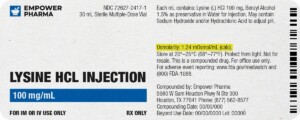
Given the vastness and uniqueness of individualized compounded formulations, it is impossible to list every potential compound we offer. To inquire if we currently carry or can compound your prescription, please fill out the form located on our Contact page or call us at (877) 562-8577.
We source all our medications and active pharmaceutical ingredients from FDA-registered suppliers and manufacturers.

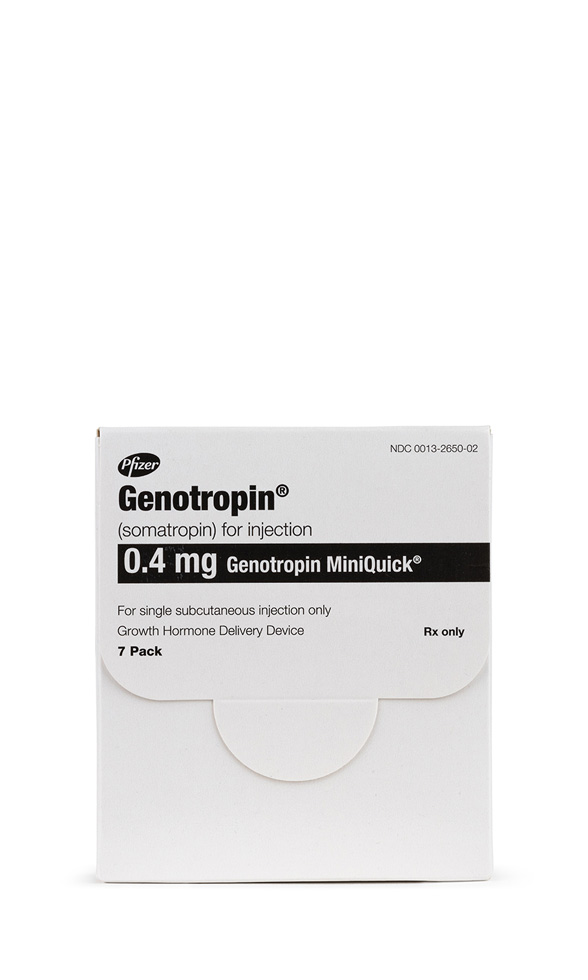
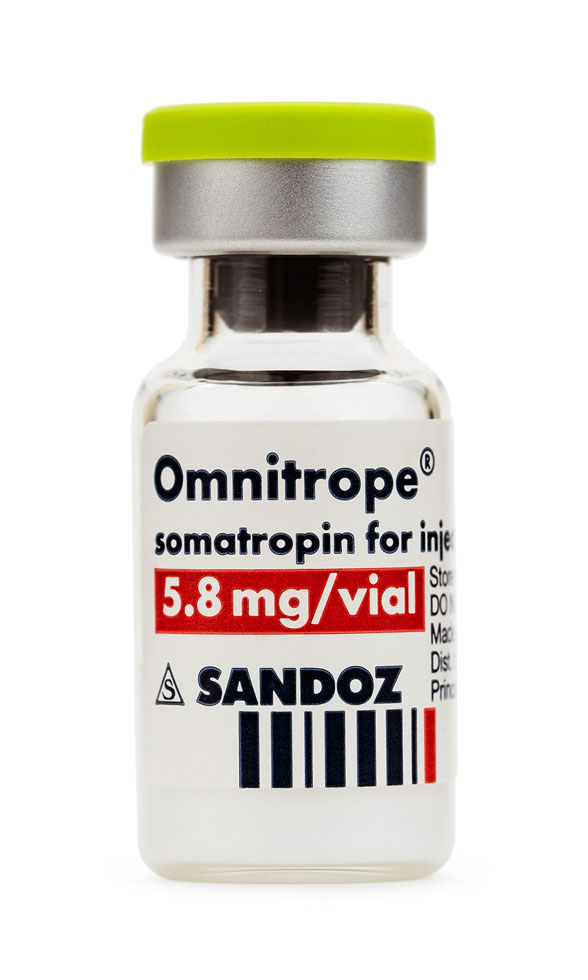 Omnitrope Injection
Omnitrope Injection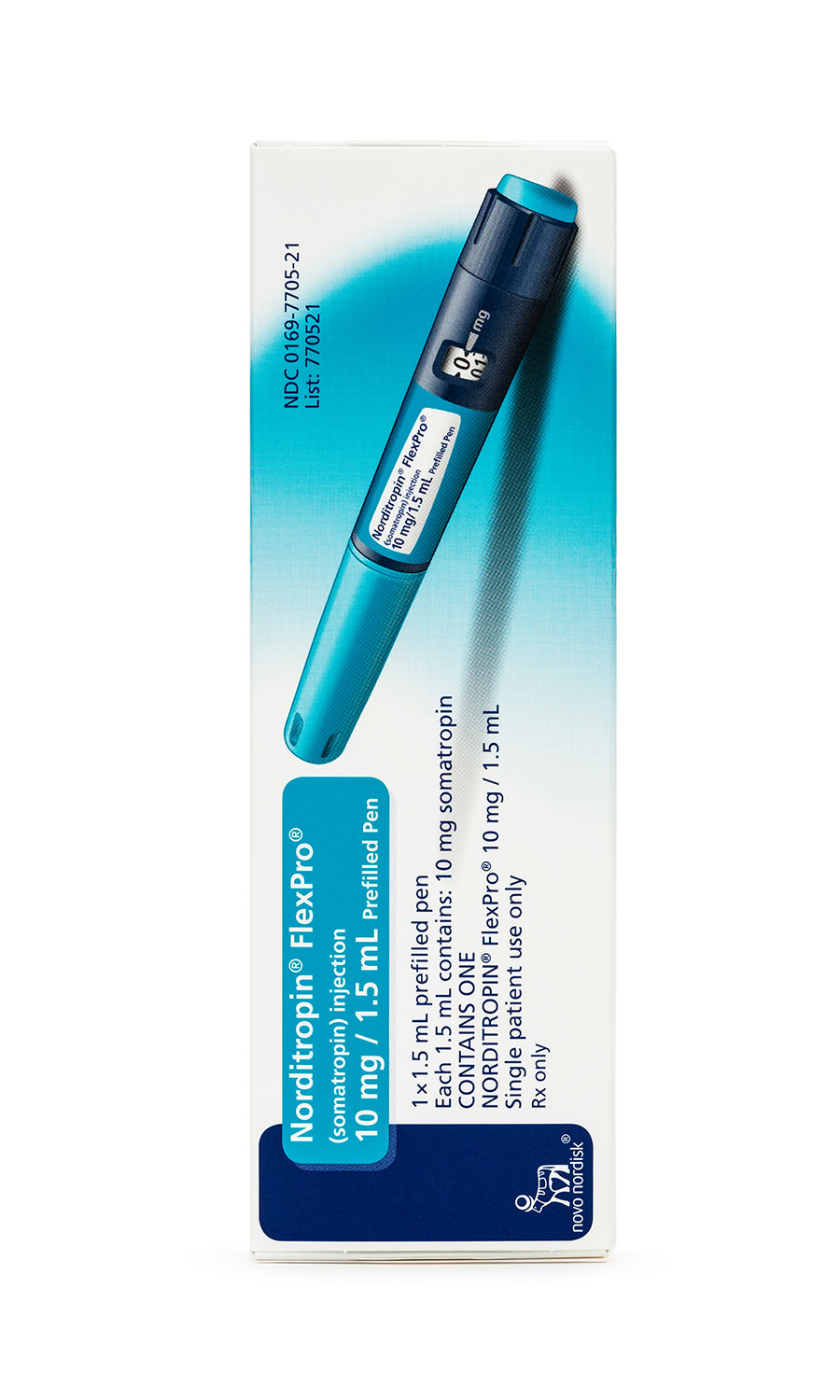 Norditropin Injection
Norditropin Injection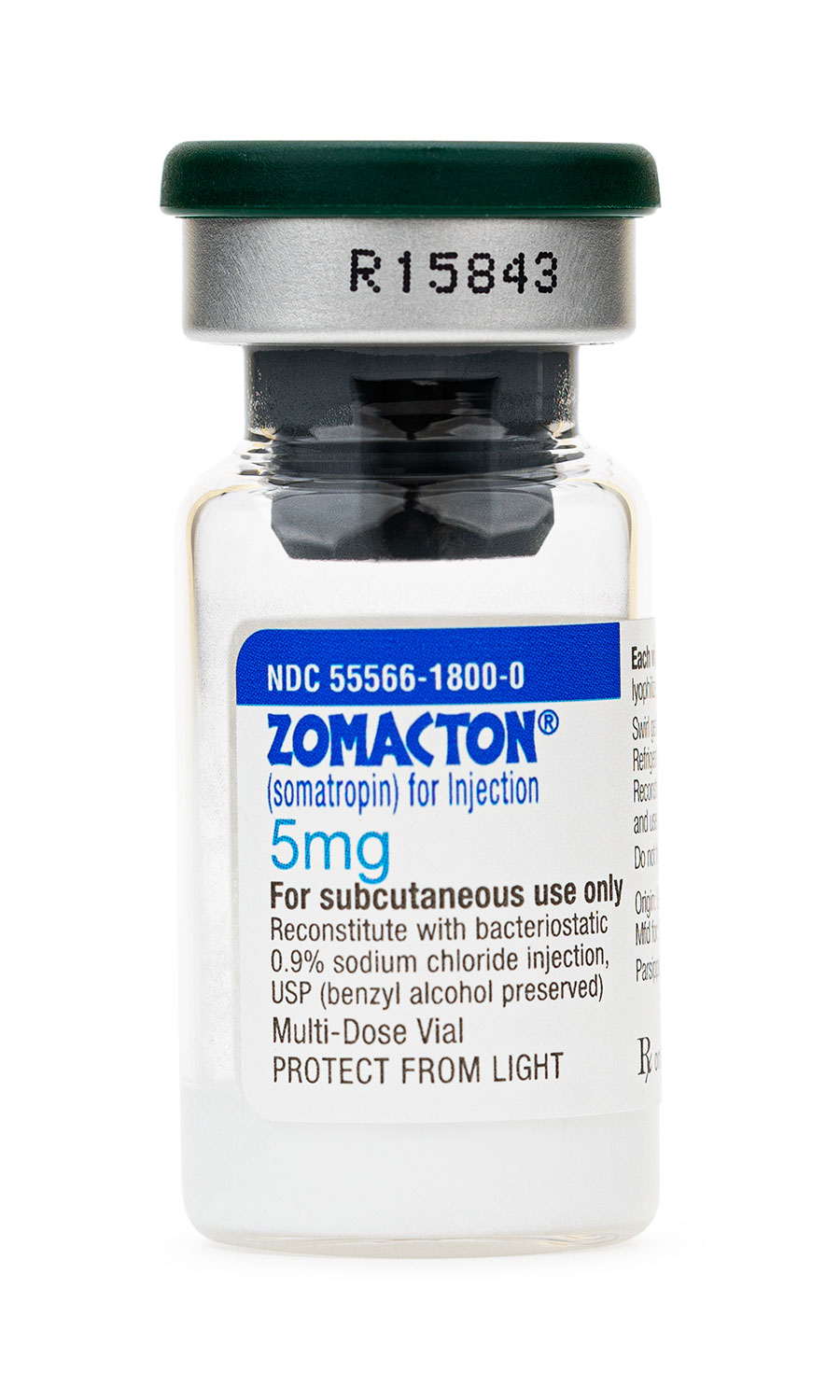 Zomacton Injection
Zomacton Injection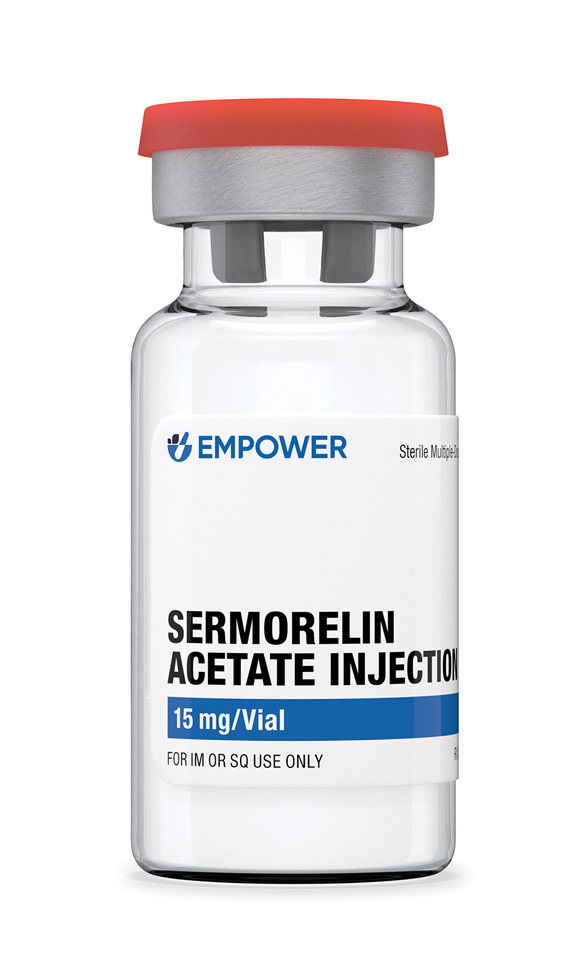 Sermorelin Acetate Injection
Sermorelin Acetate Injection Sermorelin Acetate ODT
Sermorelin Acetate ODT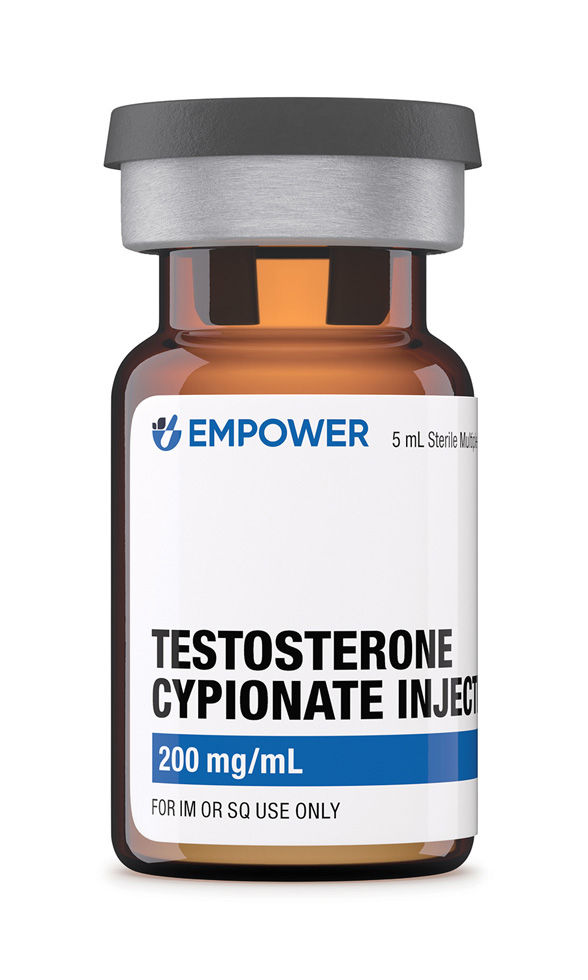 Testosterone Cypionate Injection
Testosterone Cypionate Injection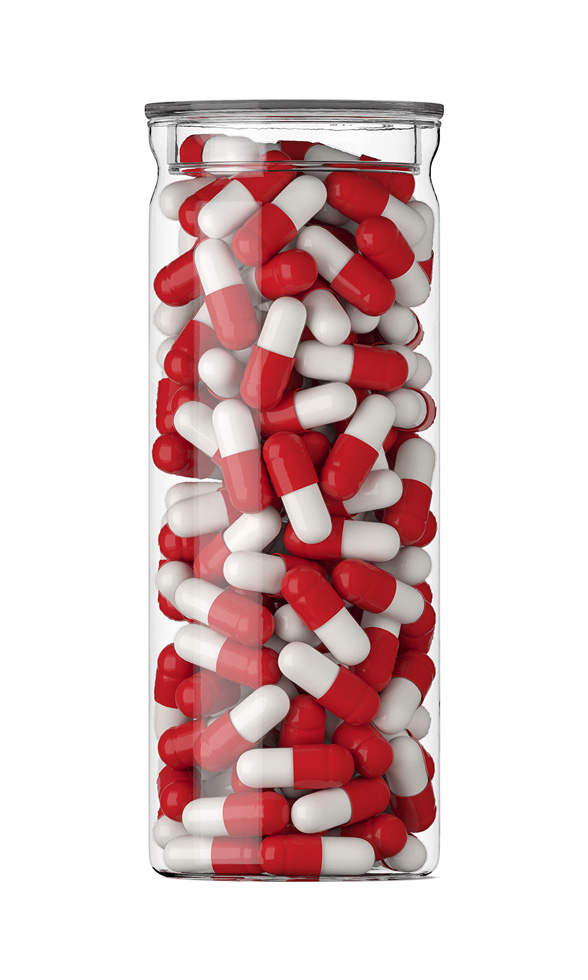 Anastrozole Capsules
Anastrozole Capsules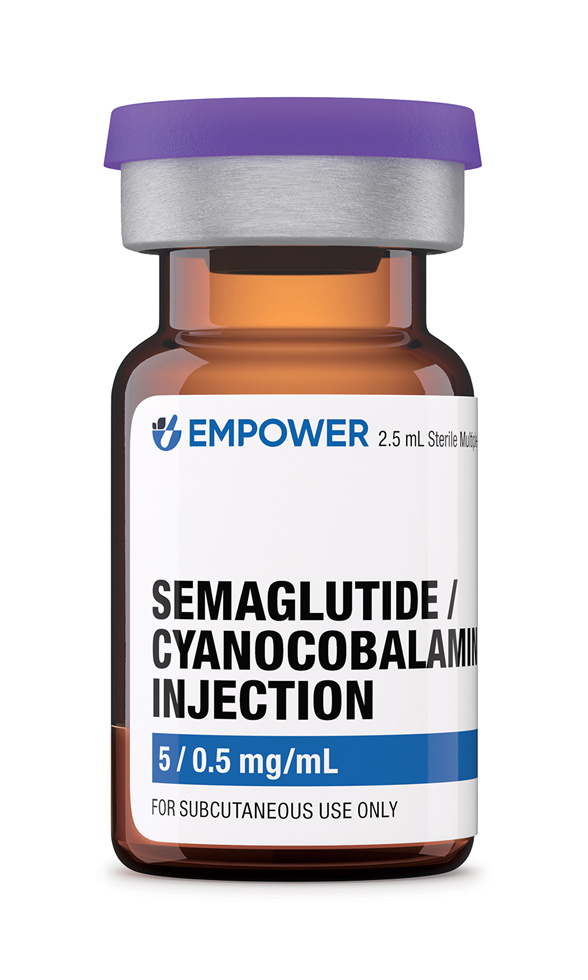 Semaglutide / Cyanocobalamin Injection
Semaglutide / Cyanocobalamin Injection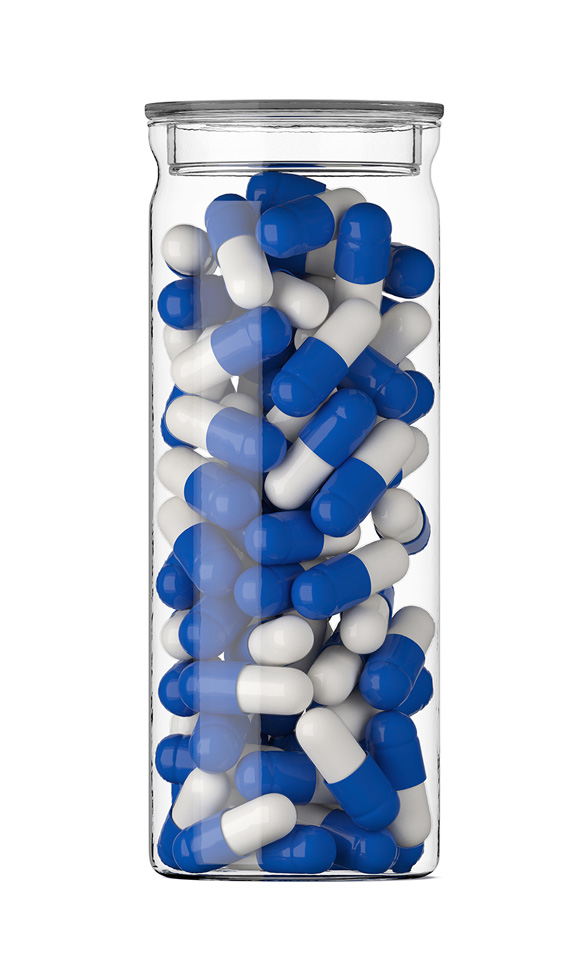 Enclomiphene Citrate Capsules
Enclomiphene Citrate Capsules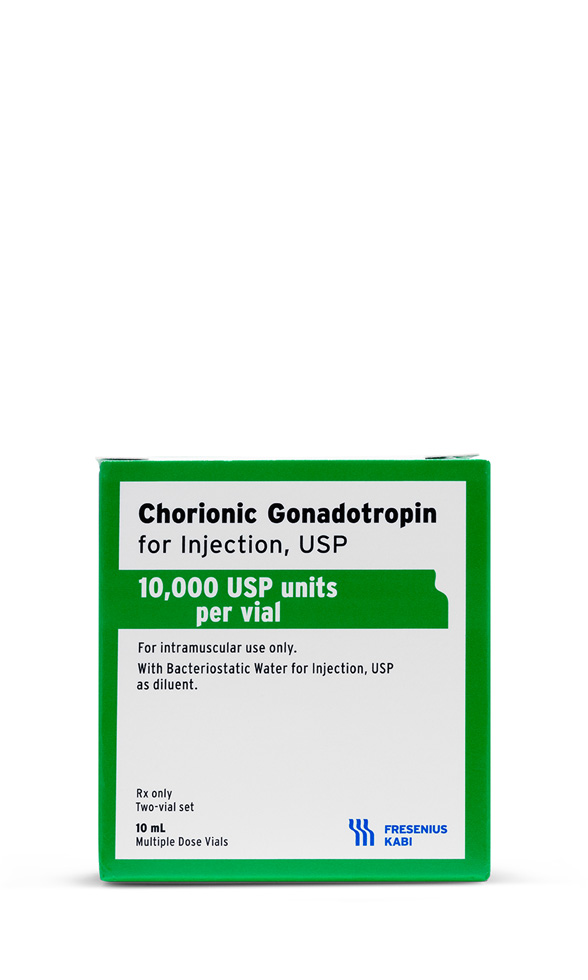 HCG Injection
HCG Injection